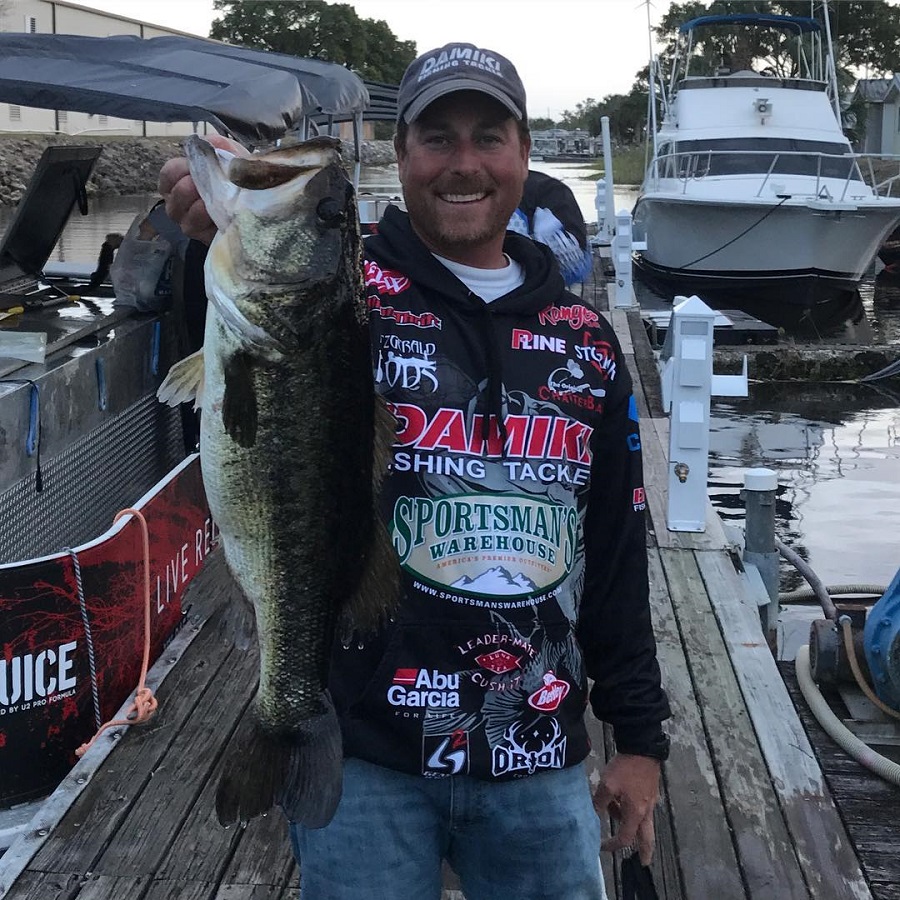 There are many different knots that will get the job done, but having the right knot for the right lure, line type, and fishing style can play a role in your fishing success. Everything from landing more fish to getting a different action out of your lures can be affected based on your knot choice.
There are many different knots that will get the job done, but having the right knot for the right lure, line type, and fishing style can play a role in your fishing success. Everything from landing more fish to getting a different action out of your lures can be affected based on your knot choice.
We asked FLW Tour pros, Bryan Thrift and Matt Arey, what knots they tie for different scenarios.
Palomar
Undoubtedly one of the most used knots in bass fishing, the Palomar was immediately named by both pros.
“The Palomar is so strong and easy to tie. As long as you wet it and cinch it you will be fine with fluorocarbon,” begins Arey.
Thrift echoed those statements and said trusting the knot is the biggest reason he ties it.
“I’ve tied it when I started bass fishing and it has never failed me,” says Thrift. “It is what I use all the time for fluorocarbon.
“Many anglers get in a rush and end up burning the line and then blame the fluorocarbon but with P-Line, it is the strongest fluorocarbon there is and if you tie it right you won’t have any issues. The best thing to do is after you tie the knot, look above the knot to see if there is any kink in the line. If there is, you may have damaged the line.”.
Thrift has a similar approach to checking the knot before making a cast and will first visually inspect it and then pull to test it further.
“I check two or three-inches above the knot to see if there is any line damage and then I pull on the knot to see if it is going to break,” he says.
This works to test the knot and also helps further cinch it down.
READ RELATED: Topwater Line | What Pound Test and Why?
Loop Knot
The Loop Knot is a way to get a little different action from a topwater bait because it allows the bait to swing more freely.
“Walking topwater bait and small poppers have a great action with a Loop Knot and the P-Line PF Original monofilament. It is so limp and still casts really well, too,” Arey says. “The loop size is typically double the size of the opening of a split ring. The bait walks side to side much better with that knot.”
Thrift, a close friend of Arey, has a similar approach to topwater fishing using the loop knot and preferring the PF Original.
“It is a great monofilament line for casting and working the topwaters. Having that loop knot allows you to walk a bait in place much easier and you take some of the weight off of the front of the bait since you don’t need a split ring,” he says.
 Improved Clinch
Improved Clinch
One of the benefits of this knot is how quickly it can be tied.
“I use it a lot when cranking with P-Line mono and retying often because you can retie so fast. The mono is limp and supple enough that you can tie this knot and not burn it,” shares Arey. Typically he only does this when time is a factor and it is not always his first choice for knots. “I use it all the time in practice for a tournament when I am swapping back and forth between baits.”
READ RELATED: What’s New from P-Line
Combining Two Line Types
There are many different knots that will combine braid to fluorocarbon and many go by several names. Thrift likes to combine his P-Line XTCB-8 and Tactical Fluorocarbon with a Modified Albright knot and prefers six wraps on both the braid and fluorocarbon.
“I use the knot to combine braid and fluorocarbon for finesse fishing with spinning rods, but I also really like to use that same knot to combine my braid to PF Original mono when fishing topwaters,” he begins. “I will have a two foot leader of 15 or 20-pound PF Original and combine it with 50-pound XTCB-8. The braid is so limp that having that short leader or mono helps to keep it from wrapping around the trebles on topwater baits.”
Snell Knot
The snell knot is a popular choice for anglers fishing heavy cover with braid and that is where Arey uses it. “If I am flipping or pitching and then working the bait horizontally through cover I will go with the Palomar. I’ll only snell if I am fishing vertically in cover,” he adds.
Once again, Thrift agreed with Arey. “I snell anytime I am setting the hook vertically. If I have line out and my hookset is more to the side, I stick with the Palomar,” he says.


 Advertising
Advertising